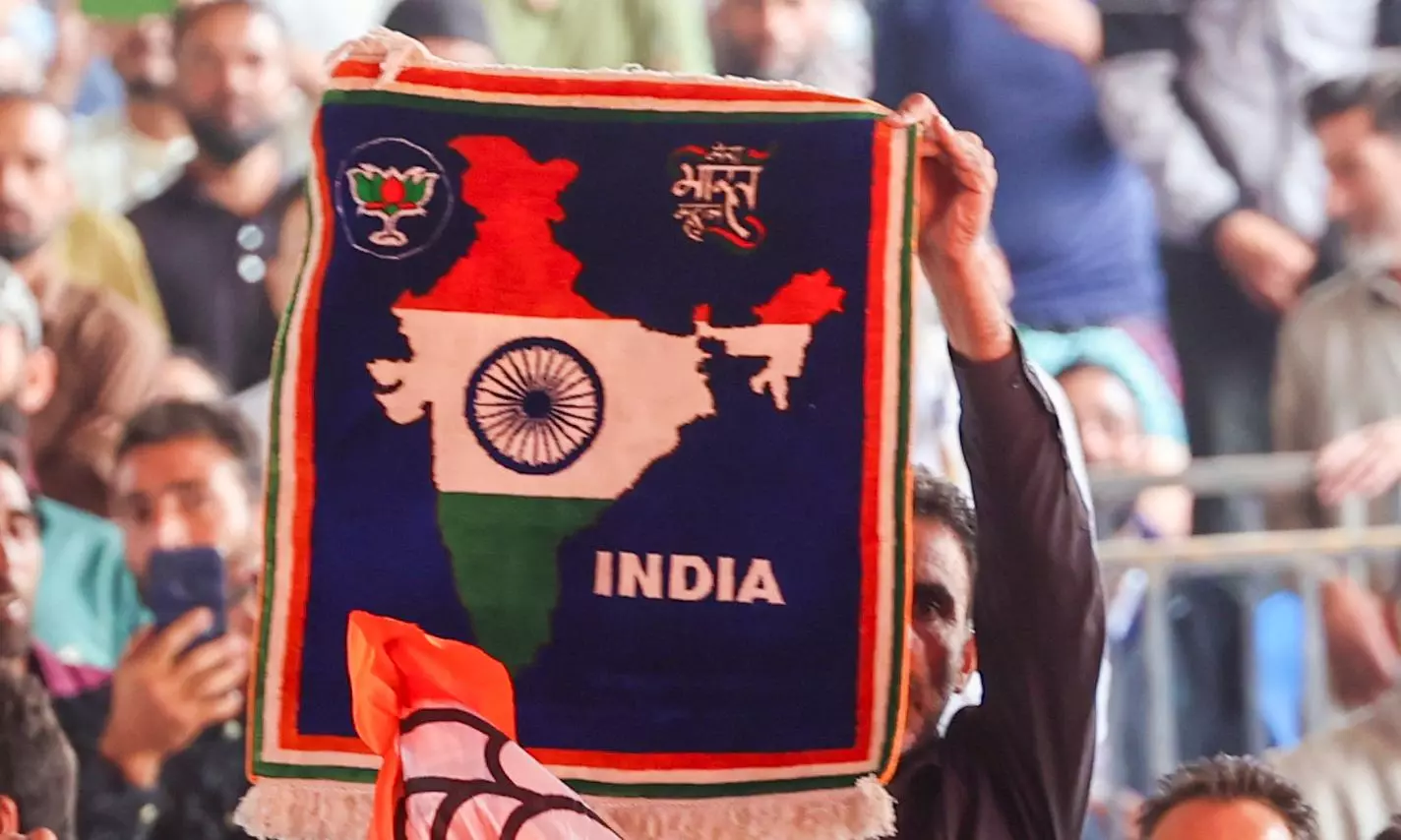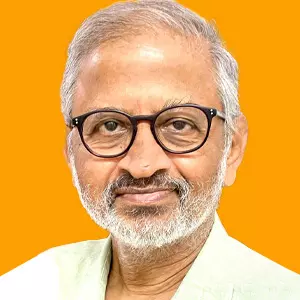
- Home
- India
- World
- Premium
- THE FEDERAL SPECIAL
- Analysis
- States
- Perspective
- Videos
- Sports
- Education
- Entertainment
- Elections
- Features
- Health
- Business
- Series
- In memoriam: Sheikh Mujibur Rahman
- Bishnoi's Men
- NEET TANGLE
- Economy Series
- Earth Day
- Kashmir’s Frozen Turbulence
- India@75
- The legend of Ramjanmabhoomi
- Liberalisation@30
- How to tame a dragon
- Celebrating biodiversity
- Farm Matters
- 50 days of solitude
- Bringing Migrants Home
- Budget 2020
- Jharkhand Votes
- The Federal Investigates
- The Federal Impact
- Vanishing Sand
- Gandhi @ 150
- Andhra Today
- Field report
- Operation Gulmarg
- Pandemic @1 Mn in India
- The Federal Year-End
- The Zero Year
- Science
- Brand studio
- Newsletter
- Elections 2024
- Events
- Home
- IndiaIndia
- World
- Analysis
- StatesStates
- PerspectivePerspective
- VideosVideos
- Sports
- Education
- Entertainment
- ElectionsElections
- Features
- Health
- BusinessBusiness
- Premium
- Loading...
Premium - Events

Why did the national media, admittedly shrunken of its independence quotient by the cheerleaders among the major TV channels, miss this loud national heartbeat?
India has had 16 national elections as a republic. No result has been as unexpected as the latest one.
But the political waters closed rapidly after the planned “coronation” of Prime Minister Narendra Modi turned into a political defeat. Re-born as an NDA prime minister, Modi barely broke a sweat as he formed the government with much the same faces and the same rhetoric.
Consequently, there hasn’t been sufficient reflection on what the BJP's setback revealed about the grassroots connect of a main pillar of democracy: the media. Too many hard political questions merited by June’s political earthquake, which a vibrant media should have asked after such a watershed election, are still waiting to be asked.
The reality and the hype
Contrast, for a moment, the conventional wisdom about the election outcome when they were called in early March — that Modi would storm back to power — with what the ground realities had to be regarding the factors that ultimately hobbled the BJP. These include disillusionment regarding jobs and prices and the waning of the Modi magic leading to the re-emergence of normal factors which shape elections — caste alliances, incumbents’ performance and the winnability of candidates.
Also Read: Why do exit polls go wrong? Hear it from a psephologist on what happens behind the scenes
The on-ground unhappiness index with the BJP had to be inversely proportionate to Modi’s stratospheric personal popularity at that very time for the BJP’s national tally to shrink from 303 to 240 and for it to lose nearly half the seats it held in Uttar Pradesh.
Factor in also that the BJP’s tally would likely have been lower had not Modi realised after the first round of polling in mid-April that his guarantees were not working any magic on the ground and that the faithful had to be rallied to the party’s war cry of Hindutva.
Media missed Dalit upsurge
You could say that a key post-election announcement factor that worked decisively in Uttar Pradesh was the INDIA alliance’s campaign pitch to the Dalits that the BJP’s target of “400 par” was a disguised attempt to change the Constitution to take away reservations.
But that rich harvest of disillusionment among Dalits would scarcely have been possible without an existing groundswell of healthy scepticism among them. Can you recall any media write-up suggesting such a sour mood among Uttar Pradesh’s Dalits despite the BJP’s aggressive attempts to co-opt the legacy of Dr Ambedkar?
Also read | Modi ‘magic’ fell prey to law of diminishing returns
Why did the national media, admittedly shrunken of its independence quotient by the cheerleaders among the major TV channels, miss this loud national heartbeat?
Media and the Andhra lesson
How many of us remember the Andhra Assembly elections of 2004? The incumbent Chief Minister was N Chandrababu Naidu. Over the previous decade, Naidu had become the darling of industry and the media for his tech savviness.
Nobody doubted that the Telugu Desam Party would sweep the elections under his leadership. Instead, the party was routed — and not just in the drought-struck rural areas but also in Hyderabad, nee Cyberabad. Not just beaten, but routed, winning only 49 Assembly seats against 180 in the dissolved House. Nobody in the mainstream media predicted the rout.
For me, then sitting out of journalism but still doing election tours, that verdict was confirmation that the ability to sniff the ground and the air had atrophied in the mainstream media.
Industry insiders reflecting honestly would be best placed to trace all the reasons for the disconnect. I can point to a few short circuits over the last 50-odd years over which, in equal parts, I have been a part of and an observer of the media.
When Indian media shone
Time was when major newspapers all had yeoman state correspondents in state capitals who knew the state’s politics like the proverbial back of the hand. The papers’ news columns carried their dispatches prominently and their state newsletters and analyses would regularly feature on the edit pages.
Meanwhile, the papers’ edit pages were the preserve of a bevy of edit page writers, scholarly and seasoned. Starting in the 1970s, magazines fortified this body of knowledgeable journalism, to be joined in this endeavour by independent and responsible TV news channels in the last two decades.
Also Read: Exit polls: Akhilesh says agencies trying to create conducive atmosphere for BJP
In this time, the once neural network in newspapers of state correspondents and stringers leading up to experienced special correspondents and legendary bureau chiefs in Delhi has virtually collapsed.
Edit pages, for their part, have largely been taken over by academics and outside “experts” — who write clinically but without the earthy feel of reporter-commentators — and partisan bylines peddling propaganda. Even in the better newspapers, in-house bylines are an exception on these pages even though they are often the best argued and most fact-filled.
Enter, polling agencies
Meanwhile, somewhere down the road, pollsters and polling agencies became the main soothsayers of public opinion. It began with psephologists predicting election results; very soon, periodic opinion polls became the only sentinels of the people’s satisfaction or otherwise with existing regimes.
The national media no longer even pretended to monitor the national mood.
Watch | Haryana: Why media should go back to good old ground reporting
Of course, I am aware that print has long been overtaken as the source of news by the electronic media — digital portals, social media and YouTube. The emasculation of the country’s main TV channels does not even need to be commented on: suffice it to say that their universal exit poll figure of 400 seats for the BJP was their nadir.
Some YouTube channels sparkle
YouTube channels, on the other hand, are an interesting development in the media’s role of strengthening democracy. Their being local and vocal is their biggest strength. I have not been able to confirm this but have been reliably told that there were two YouTube UP journalists who had predicted the Uttar Pradesh verdict correctly.
Also read | Media must tell stories about disabled more often, not just when India wins medals
I did suggest to newspaper editors, in vain, that the methodology and the reasoning behind their political acuity be made known nationally. Media stalwarts who nurture this emerging digital and electronic space aver that there is no shortage of brave, independent journalist entrepreneurs who try to follow the dictum that news is only what somebody is trying to hide from public gaze.
Also Read:
There are also a host of smaller digital entities doing fabulous work in exposing the underbellies of this formidable Indian state. But they lack the resources and the expertise to attempt wide canvas political reporting. In my knowledge there is only one digital platform which has an in-house political editor. He is very good; and he even has the gumption to offer advice to Modi-Shah. But he is an exception.
Questions still remain
Even five months on, hard political questions which cry out to be asked by the national media have not been asked. Uttar Pradesh was the BJP’s Waterloo. How closely has the BJP’s debacle there been drilled down into?
Was the Samajwadi Party’s upsurge to 39 seats only attributed to Akhilesh Yadav’s’s superior social engineering than Amit Shah’s? Was it only negative sentiment that was behind the mad frenzy seen at the Rahul Gandhi-Akhilesh Yadav rallies?
Also Read:
Journalist Neerja Chowdhury compared their frenzy to the once-in-a-lifetime outpouring of support some of us had seen when VP Singh had led the revolt against Rajiv Gandhi in the late 1980s.
I was in Singh’s jeep when the residents of Varanasi came bursting out of their balconies and roof tops to shower petals on him. Such frenzy is not just a rejection; it is a deep yearning for an alternative.
Is that the reason that the CSDS’s post-poll survey in Uttar Pradesh showed that some 8 per cent more backed Rahul Gandhi as their choice for the prime minister than Modi? This, in Modi’s home state, electorally!
Congress needs political autopsy
The Congress, too, needs to be asked sharp questions. The INDIA alliance was forged in the summer of 2023. Did it then assess that the ground conditions were such that the 2024 election was for it to lose if they got their act together?
Also read | Congress’s health is important to national polity, so party must regain its mojo
Have they reflected on how much momentum the INDIA alliance lost because the Congress tactically decided to go it solo for the Assembly elections in Rajasthan, Chhattisgarh and Madhya Pradesh in December? Has the party had any chintan baithak (brainstorming sessions) on the 2024 elections?
If there is one political lesson that the Congress should draw from the negative vote that brought it to power in Karnataka and Telangana it is that they need to govern very markedly different from the governments rejected by the people. Both these regimes have now been in power for over a year.

